Samstag, 29. September 2012
Culture Collide China: Erster Clip im Kulturnetz online
youjia, 11:18h
Seit Anfang September bin ich nun in der Redaktion des Deutsch-Chinesischen Kulturnetzes und habe versprochen, mich mehr um den dortigen multimedialen Auftritt zu kümmern. Ein Weilchen hat es gedauert, am 14./ 15. September 2012 waren wir in Köln … nun ist endlich der erste Clip online und HIER zu betrachten.
Tags für diesen Beitrag 这本文章的标记: Multimedia 多媒体, Reise 专程, Gegenwart 当代
Tags für diesen Beitrag 这本文章的标记: Multimedia 多媒体, Reise 专程, Gegenwart 当代
... link (0 Kommentare) ... comment
Freitag, 7. September 2012
Culture Collide China – Panel in Cologne 14-9-2012
youjia, 11:24h
Presented by Sound of Cologne in cooperation with CCDC Days 2012.
Participants: Li Zhenhua and Susanne Junker for fine arts and Miao Wong, Elvis. T, DJ Wash and B6 for electronic music. Stefanie Thiedig and Ralph Christoph for moderation.
Time: Friday, 14th September 2012, 3–6 pm.
Place: Stadtgarten, Venloer Straße 40, 50672 Köln, (+49) 0221 952994-0.
Topic: 2 years after the publication, we would like to raise the question if a change has taken place? That the international art collectors were replaced by domestic art collectors was something we didn’t see in 2010. The difference still is the same between the 1980th and -90th with it’s collective discoveries in varying art collectives and the 2000th, wherein mostly every artist works for him- and herself. The consensus seems: Now everyone is the greatest artist under the Chinese sky, everything else is trash. Discovery followed by being discovered, followed by hype, followed by self-confidence … followed by questioning and doubt? I am really eager at what Li Zhenhua and Susanne have to say to this and much more.
At the same time, media art and all the separate parts of electronic music have found it’s more or less large niches. You can find the whole line-up from underground till mainstream. In Beijing as well as in Shanghai, different labels, clubs and festivals have gathered an international reputation. With Miao Wong and Elvis T. from the Beijinger “Acupuncture Label”, who are also organizing the INTRO Festivals and the Lantern-Club, with B6 from Shanghai, the most known and important electronic artist from his city, they represent the young guard on this panel.
The clip is online HERE.
For more information in German, check here.
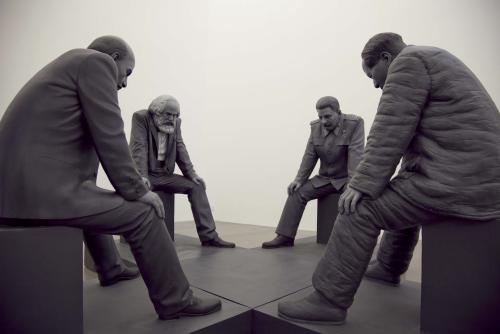
Taken at Galerie Urs Meile in May 2012. Li Zhanyang 李占洋: Four Great Thinkers 四伟人像. 2011.
Tags für diesen Beitrag 这本文章的标记: Ankündigung 通知, Gegenwart 当代, Multimedia 多媒体, Videografie 视频, Reise 专程, Häufig gelesen 频看
Participants: Li Zhenhua and Susanne Junker for fine arts and Miao Wong, Elvis. T, DJ Wash and B6 for electronic music. Stefanie Thiedig and Ralph Christoph for moderation.
Time: Friday, 14th September 2012, 3–6 pm.
Place: Stadtgarten, Venloer Straße 40, 50672 Köln, (+49) 0221 952994-0.
Topic: 2 years after the publication, we would like to raise the question if a change has taken place? That the international art collectors were replaced by domestic art collectors was something we didn’t see in 2010. The difference still is the same between the 1980th and -90th with it’s collective discoveries in varying art collectives and the 2000th, wherein mostly every artist works for him- and herself. The consensus seems: Now everyone is the greatest artist under the Chinese sky, everything else is trash. Discovery followed by being discovered, followed by hype, followed by self-confidence … followed by questioning and doubt? I am really eager at what Li Zhenhua and Susanne have to say to this and much more.
At the same time, media art and all the separate parts of electronic music have found it’s more or less large niches. You can find the whole line-up from underground till mainstream. In Beijing as well as in Shanghai, different labels, clubs and festivals have gathered an international reputation. With Miao Wong and Elvis T. from the Beijinger “Acupuncture Label”, who are also organizing the INTRO Festivals and the Lantern-Club, with B6 from Shanghai, the most known and important electronic artist from his city, they represent the young guard on this panel.
The clip is online HERE.
For more information in German, check here.

Taken at Galerie Urs Meile in May 2012. Li Zhanyang 李占洋: Four Great Thinkers 四伟人像. 2011.
Tags für diesen Beitrag 这本文章的标记: Ankündigung 通知, Gegenwart 当代, Multimedia 多媒体, Videografie 视频, Reise 专程, Häufig gelesen 频看
... link (0 Kommentare) ... comment
Montag, 9. Juli 2012
Sommerreise: Stuttgart, Ludwigsburg
youjia, 18:23h
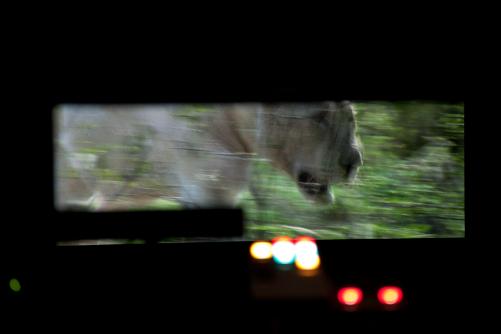
Das Naturfilmfestival NaturVision in Ludwigsburg bei Stuttgart und die Einladung, dort unseren "Forstwärts"-Film im Zuge eines Workshops zu präsentieren, waren die ausschlaggebenden Gründe zur Planung meiner Sommerreise. Nun sitze ich nach 4 Tagen rauschenden Festes wieder auf Beates und Patricks Balkon im Nachdelirium all der Eindrücke.
Am Samstag, den 7.7.2012, durften Julia und ich unseren Film also das erste Mal bei einem Filmfestival vorstellen. Es war auch das erste Mal, dass wir beide ihn gemeinsam auf einer großen Leinwand ausgestrahlt sahen. Für uns schon ein sehr bewegender Augenblick … und während des Schreibens drückt gerade wieder einen Kloß gegen die Augäpfel. Unser herzlicher Dank gilt den beiden Festivalleitern Ralph Thoms und Dr. Kay Hoffmann und besonders auch dem Publikum, das den Weg zu uns an einem frühen Samstagmorgen um 10:30 Uhr nicht gescheut hat.
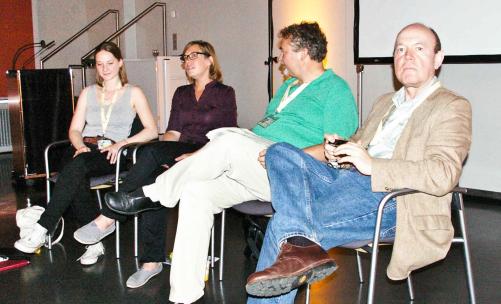
Moderator Dr. Kay Hoffmann (in Grün) und Ehrengast Martin Brandes, unserem "Krawattenmann" im Film. Foto von Johannes Keil.
Mit der Veröffentlichung von "Forstwärts" im Internet haben wir gewartet, damit der Film seine Premiere bei NaturVision feiern konnte. Nun möchten wir ihn offiziell online stellen, tadaaa:
Die Ladezeit des cn. YouTubes "YouKu" dauert von Dland aus etwas länger, aber ermöglicht auch die Betrachtung in China. Weitere Informationen als Extralink, gerne auch zum Verschicken und Verbreiten, gibt es hier.
Weiteres zu NaturVision. 3 Filme, die ich im Laufe der Festtage gesehen habe, möchte ich kurz erwähnen. 2 davon liefen auf der Eröffnungsfeier.
Zunächst der dokumentarische Kurzfilm Kursdorf von Michael Schwarz (Regie) und Alexander Greisser (Kamera), der mir besonders wegen seiner Ästhetik und seinen ruhigen Bildern, seiner stillen und unaufdringlichen Erzählweise sehr gut gefallen hat. Kursdorf ist ein mittlerweile auf 25 Einwohner geschrumpftes und vom Flughafen Leipzig/ Halle komplett eingeschlossenes Dorf, das mit hoher Wahrscheinlichkeit alsbald nur noch in den Analen Sachsens zu finden sein wird.
Der zweite Film, den ich spannend fand, war die erste 3D-Produktion fürs ZDF, Die Huberbuam von Jens Monat. Für 3D-Aufnahmen werden zwei Kameras horizontal oder vertikal dem menschlichen Augenabstand von etwa 6 cm entsprechend nebeneinander platziert. Die Filmemacher nahmen sich dafür der beeindruckenden Berglandschaft und dem Hoheitsgebiet zweier Kletterer, den Huberbuam, an. Im Anschluss an den Film wurde erklärt, dass unser Auge nicht in der Lage ist, Berge in weiten Fernen in 3D wahrzunehmen, da sich die 6 cm in der Weite alsbald ausgleichen. Um nun dem Zuschauer eine neue Tiefendimension zu ermöglichen, wurden die beiden Kameras teilweise bis zu 30 m voneinander entfernt platziert. Diese Information und die daraus resultierenden Bilder, die Blicke durch Felsspalten, in Abhänge, über Gebirgsketten machten den Film für mich zu einem außerordentlichen Erlebnis. Die Theatralik der Erzählung mit ihrer Gewichtung auf die überstandene Krankheit des einen Klettermaxen haben mir nicht gefallen, aber es ist halt eine Fernsehproduktion.
Und dann war da der Film Die Farben der Wüste – Die weiße Uyuni von Petra Haffter (Regie) und Philip Flämig (Kamera). Die Kamera hat in Bolivien Bilder eingefangen, in denen der Horizont häufig kaum zu sehen ist, sondern als Marker des Spiegels fungiert – ruhig und schön, das mag ich, und ich mag auch, dass es beim Publikum ankommt. Als ich bei der Preisverleihung, dazu engagiert, das Siegerfoto für den Kamerapreis schoss, blickte Philip Flämig in meine Linse und sagte, dass Die weiße Uyuni ebenfalls mit einer 5DII gedreht wurde. Ha.
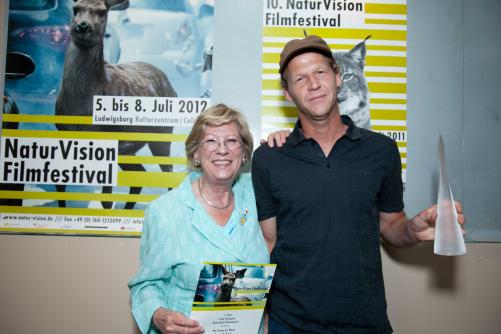
Am Freitagabend dann wurde zum Get Together in das Lustschloss Favorite geladen.
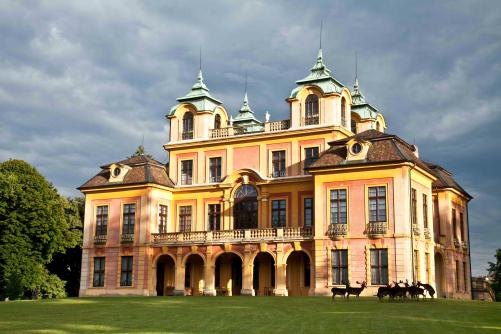
Ganz Ludwigsburg – auf dem Weg nach Heilbronn im Norden Stuttgarts, entstanden vor gut 300 Jahren durch selbstdarstellende Gelüste Eberhard Ludwigs – ist mit all seinen Schloss- und Parkanlagen eine barockene Augenweide, wie sie im Buche steht. Erblickte man nur dies, so würde man, ich zumindest, ev. bald von lauter historischer Pompösität erschlagen den Rücktritt beginnen. Glücklicherweise lebt die Stadt nicht nur in der Vergangenheit, sondern hat eine imposante Filmakademie aufzuweisen.
Auf der Empore des Lustschlosses gen Süden gerichtet, ist dies, so wurde mir erzählt, die Vermessungslinie von ganz Baden-Württemberg. Auch heute noch wird sie als Maßstab für jegliche Grundstücksgrenze zurate gezogen. Der weiße Opel Meriva meiner Mutti und Julias NaturVisions-Gefährt durften beladen für die Veranstaltung hin- und herfahrend auf dem Gelände auf dieser Achse stehen.
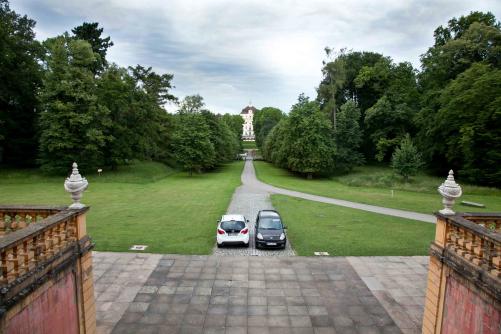
Und hier ein paar Bilder der Veranstaltung, die ich als für den Abend angeheuerte Fotografin vor die Linse bekam. Pressemaster Johannes Keil, Festivalleiter Dr. Kay Hoffmann und eine der Moderatorinnen.
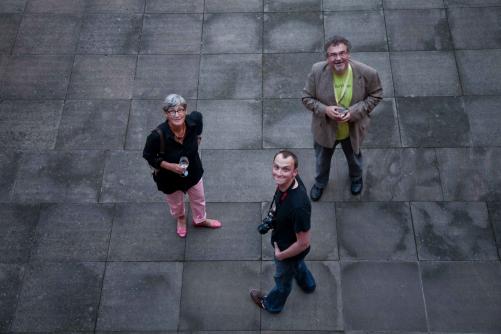
Sabine Willmann, Liu Xia und Julia Odenstein.
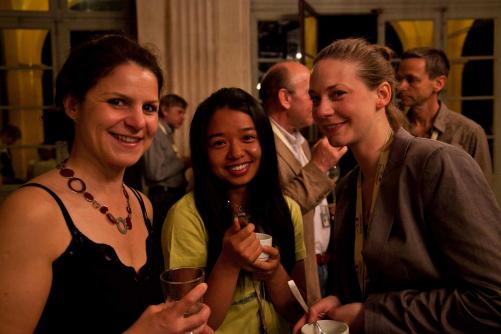
Mitfotograf Matthias Balk.
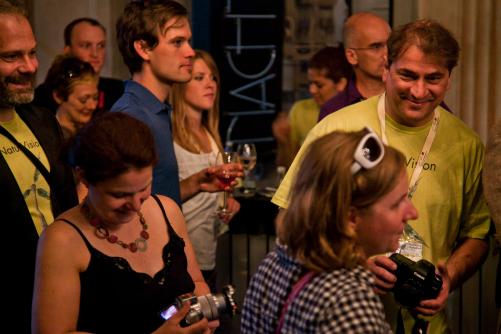
Eva Simminger.
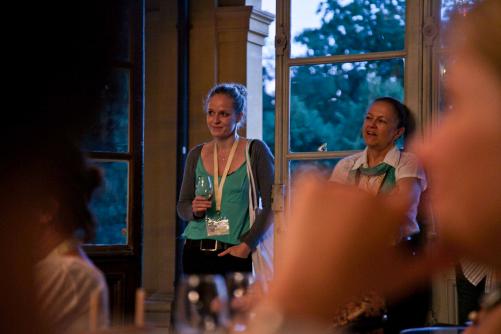
Das Dammwild lief im Park frei herum …
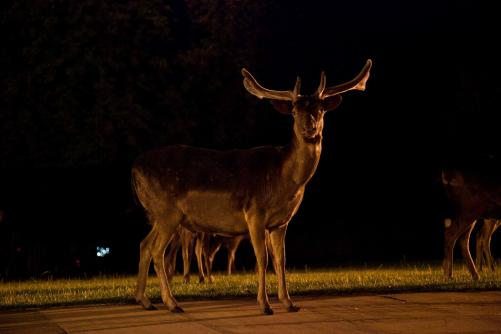
… bereits gewöhnt an bis verwöhnt von den Besuchern, hier von Julias Mutti, die das Recycling der Veranstaltungsverköstigung weiterführte (kredenzt wurde eine köstliche Suppe mit zuvor bereits von der Ludwigsburger Gastronomie als Müll aussortiertem Gemüse, Julias Idee):
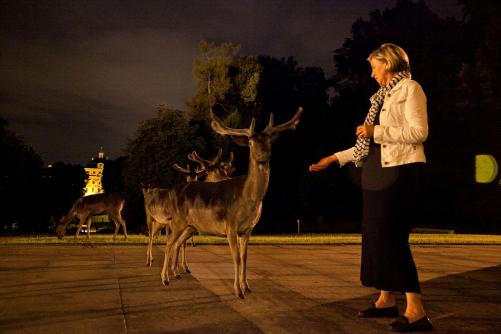
Das Festival war toll, die Filme, die Leute dort, das Ambiente, all die ganzen Eindrücke – es war mir eine große Ehre, dabei gewesen sein zu dürfen.
Und Stuttgart? Stuttgart ist irgendwie merkwürdig. Ich mag es hier weiterhin, eher auf Besuch, vermute ich, denn es wirkt durch seine Lage im Tal und dadurch, dass man so häufig zunächst in die Mitte muss, um dann aus ihr wieder hinaus zu seinem Bestimmungsorte zu gelangen, doch etwas zentralistisch. Außerdem kann ich mir nicht helfen, aber die Menschen hier wirken auf mich ziemlich gemächlich – es wird sich in beinahe jedem Geschäft gefühlt stundenlang ausführlich um jeden Kunden ausschließlich einzeln bemüht, während die Schlange weiter wächst und Multitasking ein Fremdwort bleibt, wie kann man es so nur zu einem der bedeutendsten Wirtschaftsstandorte Deutschlands schaffen? Aus dem Norden und sich verstärkend im Nordosten Chinas kenne ich lange Wartezeiten zur Genüge – auch wenn sich diese Art von Langsamkeit eher aus der Einstellung speist, dass das Leben ach so schwer und damit jegliche Handlange mühsam ist –, bin ich es nur von Dland nicht (mehr?) gewohnt, beginnt meine Reise und mein längerer Aufenthalt in der Heimat in Richtung Perspektivrückung Sinn zu machen?
Bis morgen bin ich noch hier, am Mittwoch geht es dann – oh, wie ich mich freue – mit Kaijin nach PARIS.
Tags für diesen Beitrag 这本文章的标记: Fotografie 摄影, Videografie 视频, Reise 专程, Häufig gelesen 频看
... link (0 Kommentare) ... comment
Sonntag, 24. Juni 2012
"Forstwärts" auf Filmfestival "NaturVision" bei Stuttgart
youjia, 19:53h
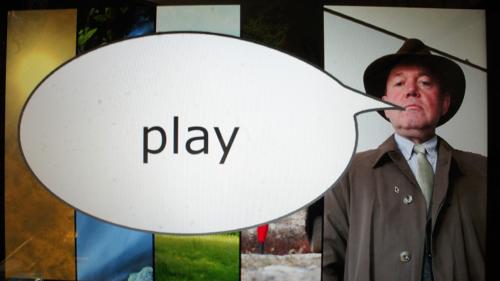
Das Naturfilmfestival NaturVision findet dieses Jahr erstmals in Ludwigsburg bei Stuttgart statt – und wir sind eingeladen, unseren Forstwärts-Film im Zuge eines Workshops zu präsentieren. Wir, Julia Odenstein und Stefanie Thiedig, sprechen zusammen mit Martin Brandes über unsere Filmproduktion und die sozio-kulturellen Aspekte zu Umwelt- und Naturschutz in China und laden Sie ganz herzlich dazu ein.
Am Samstag, den 7. Juli 2012 um 10.30 Uhr
im Kleinen Kinosaal des Kulturzentrums Ludwigsburg
Wilhelmstr. 9/ 1
71638 Ludwigsburg/ Württemberg
(+49)-89-41360
S. inkl. Stadtplan hier und die Veranstaltungshinweise finden sich hier.
Tags für diesen Beitrag 这本文章的标记: Videografie 视频, Multimedia 多媒体, Reise 专程
... link (0 Kommentare) ... comment
Freitag, 10. Februar 2012
Forstwärts: Der Film
youjia, 08:05h
Stadt und Wald sind die beiden Hauptakteure in unserem „Forstwärts"-Film zur Reihe „Forstwärts" in Beijing anlässlich des „Internationalen Jahrs der Wälder 2011". Hier im Film finden sie zusammen. Gefördert wurde „Forstwärts" durch die Deutsche Botschaft Peking, unterstützt durch die GIZ, die Chinesische State Forrest Administration, das Forstamt Beijing sowie die Deutsche Botschaftsschule Peking. Realisiert wurde „Forstwärts" durch „Kulturgut 文化财富", der Plattform freischaffender Kreativer in Beijing.
Filmformat
Konzeptionell mit Filmstills, Animationen, Musik und Grafiken arbeitend, überwiegend mit statischer Kamera gedreht und geschnitten, liest sich der Film wie ein Bilderbuch, in dem in den einzelnen Szenen Wälder und Stadt agieren. Um international verstanden zu werden, haben wir komplett auf die Erzählstimme verzichtet. Die Geschichte erzählt sich selbst. Neben der Bildebene über Grafiken und wenige Begriffe sowie über Musik und Vertonung.
Filminhalt
1. Wie funktioniert ein Wald? Was tut er für uns?
2. Diorama Miyun
3. Detailbetrachtungen
a. Wasser
b. Landwirtschaft
c. Erholung
4. Was tun wir für den Wald?
Die Elemente Sonne, Wasser, Wald und Mensch sind durch die Farben Gelb, Blau, Grün und Rot repräsentiert -- die aufgrund unserer Verschwendung Grau werden bzw. mit achtsamer Handlung wieder ihre Farbe annehmen. Den Raubbau, den wir mit unserer Natur betreiben, stellen wir als Farbenklau dar, den wir an uns selbst vollziehen.
Unsere Botschaft: Noch besteht die Chance, unsere bunte Welt zu erhalten, wenn wir alle zusammen ökonomisch und ökologisch handeln. Unsere Hauptdarstellerin Tongtong, ein 11-jähriges Mädchen aus Beijing, symbolisiert mit ihrem roten Schirm uns alle, die Menschen. Und sie führt uns, die Zuschauer, von der Stadt in den Wald und wieder zurück.
Über den gesamten Film hinweg wurde dem Zuschauer Tongtongs Gesicht nicht gezeigt. Ganz am Schluss dreht sie sich vollformatig in die Kamera -- denn jetzt müssen wir Gesicht zeigen. Jetzt sind wir gemeinsam an der Reihe!
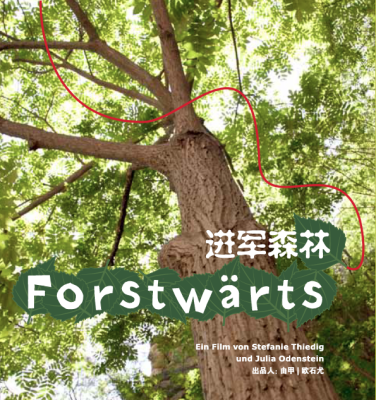
进军森林:电影
城市和森林是我们值"2011国际森林年"之际在北京举办的"进军森林"系列活动中的"进军森林"电影里的两个主角。在影片中它们聚集到了一起。此次"进军森林"活动由北京德国大使馆出资赞助,由GIZ和中国国家森林机构,北京森林局及北京德国使馆学校协助大力支持。最终由在北京创意自由职业平台的"文化财富"执行完成。
影片形式
从构思理念上由静态拍摄,动画,音乐和版画来运作。大部分由静态摄影机来拍摄和剪接编辑完成。影片就如同在阅读一本图画书,其中的每一个场景都由森林和城市来表演。 为了使影片更能被国际化理解,我们完全放弃了叙事的旁白声音。故事在版画和一些概念以及音乐和配乐的图像平面辅助下,由它自身来进行叙述。
电影内容
1. 森林是怎样运作地?它为我们做什么?
2. 密云综览
3. 详尽观察探索
a) 水资源
b) 农业
c) 休闲娱乐
4. 我们为森林做什么?
太阳,水,森林和人类这四种元素由黄,蓝,绿和红四种颜色来代表-由于我们的浪费将变为灰色,通过我们的行动继而又再此变回到它们本身的颜色。我们在这里用鲜明的颜色来将由我们自身所造成地对大自然滥用和过分损耗表达出来。我们的通告:如果我们大家都一起来节约和采取行动,那么还是由机会来获得彩色的世界。我们片中的主演彤彤是一名11岁的北京小女孩。她用一把红伞代表这我们全人类。同时,她带领着观众们在城市和森林之间往返穿越。
第一章节分为三部分,它首先将两大主题森林和城市导入。在此之上,给"森林的作用"加注不同色彩,同时借助水资源的循环和森林之地面作用的动画图像来阐述。随后影片将我们带到今年森林年中德学生活动主场密云饮用水水库。
Produktion 制作人员
Regie und Produktion 编辑制作: Stefanie Thiedig 由甲 | Julia Odenstein
Kamera 拍摄: Stefanie Thiedig 由甲 | Julia Odenstein
Grafikdesign 美术设计: Julia Hofmann
Animation 动画: Peter Jänichen
Schnitt 剪辑: Wan-Ho Got | Kevin Fritz
Sound 配乐、声音: Terry Tu 涂灏
Übersetzung 翻译: Xie Kaijin 解开缙
Darsteller 演员
Dai Yuntong 戴昀彤, Tongtong 彤彤
Martin Brandes, Martin 马平
Gefördert von 赞助
Deutsche Botschaft Peking 德国驻华大使馆
Beijing im November 2011, © Kulturgut, Stefanie Thiedig
2011年11月北京,©文化财富,由甲
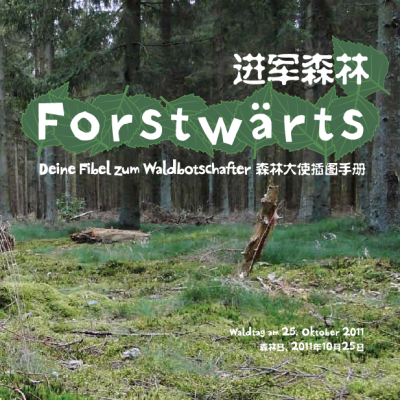
Tags für diesen Beitrag 这本文章的标记: Videografie 视频, Fotografie 摄影, Multimedia 多媒体, Häufig gelesen 频看
... link (0 Kommentare) ... comment
Dienstag, 4. Oktober 2011
Kulturgut goes Multimedia – Kulturgut goes Forstwärts
youjia, 21:23h
[@MA-Comrates: Please excuse my first post being in German, I have to get used to the process and am very sorry to have to refer you to Google Translate – it will be only for this very first post. The following German is an introduction of my upcoming posts for the course onto this blog. Kulturgut goes multimedia. The 1. assignment with the pictures below is in English.]
Denn: Ab jetzt, ab Ende September, mache ich einen Master in "Multimedia Storytelling", wie ich es für mich gerne nennen möchte – eig. MM Journalismus, aber ich bin nicht so der News Broadcaster, sondern möchte einfach wie gehabt weiterhin erzählen, was um mich herum los ist. Nur multimedial, denn Kulturgut goes Multimedia. Schritt für Schritt über 18 Monate hinweg. Und da ich eine multimediale Plattform für den Kurs benötige, wird diese mein in den letzten drei, vier Monaten leider etwas vernachlässigter Blog (zwischenzeitlich war ich ein wenig auf Weibo aktiv). Hier wird also ab heute neben den gewohnten gelegentlichen Posts ein "MM"-Work-in-Progress mit den Veröffentlichungen der Assignments zu verfolgen sein.
Bis Mitte November noch und seit März bereits arbeiten Julia Odenstein und ich für das "Internationale Jahr der Wälder 2011" an unserem "Forstwärts"-Projekt – mit dem bis zum 14.11. erfolgenden Endprodukt 1. einer Waldfibel für cn. und dt. Kinder im Alter von 10 bis 11 Jahren und 2. eines Kurzfilms. All das Wald- und Wiesenmaterial, das sich dafür bislang aus Norddeutschland, Miyun und Dali angesammelt hat und sich noch ansammeln wird, bildet gleichzeitig den Pool für meine MM-Assignments. Daraus werden kleine Wald-Arbeiten bzw. Forstwärts-Extrakte entstehen, die thematisch die Anfangsphase meines Studiums bilden.
Zwei Anmerkungen in eigener Sache noch zum Posten für den Kurs:
Ich habe keine Lust, immer über VPN ins Netz zu gehen. Deshalb nutze ich soweit wie möglich Youku statt Youtube und Weibo statt Twitter.
Leider, leider wird das Ganze auf Englisch vonstatten gehen müssen. Um vieles Etliches lieber würde ich bei der vertrauteren Muttersprache bleiben, aber da es sich um eine britische Uni mit internationalen Lehrkräften und Mitstudenten handelt, komme ich nicht ums Globish herum. Dieser erste, der erklärende Post ist noch auf Deutsch mit einem hoffentlich nicht allzu dreisten Google-Translate-Link.
Das 1. Assignment soll am 14.10.2011 online stehen (ein weiterer 14. als Deadline). Für dessen ersten von drei Teilen folgt hier zunächst eine 4er-Bildstrecke mit integrierten Metadaten und nachzulesenden Untertiteln.
ENGLISH: For the first of the three parts of the first assignment to be online on October 14th, this is the pictorial storytelling of 4 photos incl. metadata and their captions.
Der Titel ganz unprätentiös, los gehts:
Into the Woods
2011 is the "International Year of Forests". These are 2x2 pictures of woods in Northern Germany and Southern China, close to Bad Segeberg and Dali.
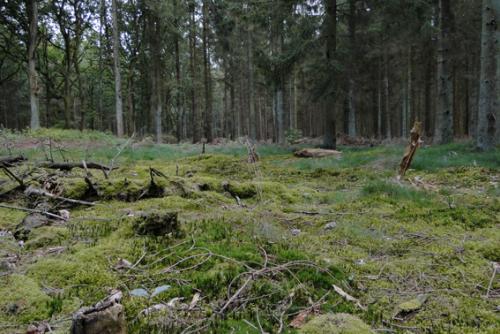
Mossy forestscape in Germany in September 2011.
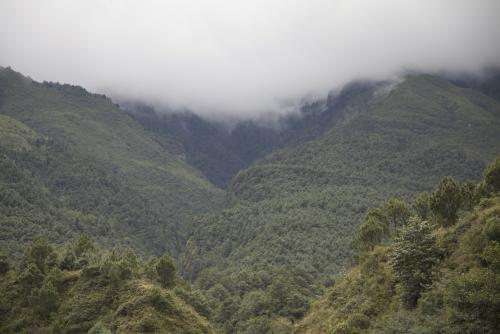
Cloudy forestscape in China in September 2011.
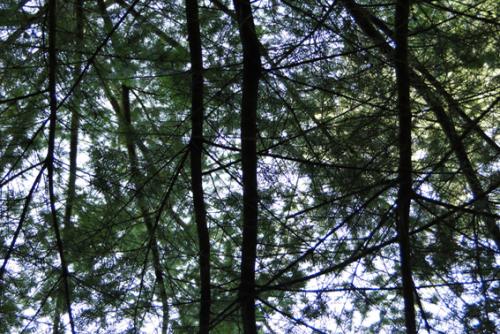
Parallelism in Germany …
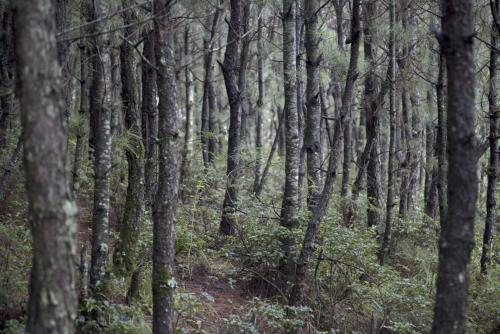
… and in China in September 2011.
___
Waterstream
Part 2 of the 1. assignment is a 1 minute audio. There are no layers in this one – I did cut it and the metadata is running in the background.
It is a waterstream taped Tuesday, 11-Oct-2011, in Miyun.
___
3D Forest Move
Part 3 of the 1. assignment is almost a 1 minute video. It is the raw material only cut by it's length out of 2:03 min. I shot it on 3-Sep-2011 in Northern Germany. The 3D effect is really nice. It is a filmed realization after the suggestion of Peter Jänichen.
You listen to the badly cut (tuned down a little in the end) first track of Ólafur Arnalds' "Eulogy for Evolution".
Youku kicked me out, so this one is unfortunately on YouTube:
Tags für diesen Beitrag 这本文章的标记: Multimedia 多媒体, Fotografie 摄影, Videografie 视频, Häufig gelesen 频看
Denn: Ab jetzt, ab Ende September, mache ich einen Master in "Multimedia Storytelling", wie ich es für mich gerne nennen möchte – eig. MM Journalismus, aber ich bin nicht so der News Broadcaster, sondern möchte einfach wie gehabt weiterhin erzählen, was um mich herum los ist. Nur multimedial, denn Kulturgut goes Multimedia. Schritt für Schritt über 18 Monate hinweg. Und da ich eine multimediale Plattform für den Kurs benötige, wird diese mein in den letzten drei, vier Monaten leider etwas vernachlässigter Blog (zwischenzeitlich war ich ein wenig auf Weibo aktiv). Hier wird also ab heute neben den gewohnten gelegentlichen Posts ein "MM"-Work-in-Progress mit den Veröffentlichungen der Assignments zu verfolgen sein.
Bis Mitte November noch und seit März bereits arbeiten Julia Odenstein und ich für das "Internationale Jahr der Wälder 2011" an unserem "Forstwärts"-Projekt – mit dem bis zum 14.11. erfolgenden Endprodukt 1. einer Waldfibel für cn. und dt. Kinder im Alter von 10 bis 11 Jahren und 2. eines Kurzfilms. All das Wald- und Wiesenmaterial, das sich dafür bislang aus Norddeutschland, Miyun und Dali angesammelt hat und sich noch ansammeln wird, bildet gleichzeitig den Pool für meine MM-Assignments. Daraus werden kleine Wald-Arbeiten bzw. Forstwärts-Extrakte entstehen, die thematisch die Anfangsphase meines Studiums bilden.
Zwei Anmerkungen in eigener Sache noch zum Posten für den Kurs:
Ich habe keine Lust, immer über VPN ins Netz zu gehen. Deshalb nutze ich soweit wie möglich Youku statt Youtube und Weibo statt Twitter.
Leider, leider wird das Ganze auf Englisch vonstatten gehen müssen. Um vieles Etliches lieber würde ich bei der vertrauteren Muttersprache bleiben, aber da es sich um eine britische Uni mit internationalen Lehrkräften und Mitstudenten handelt, komme ich nicht ums Globish herum. Dieser erste, der erklärende Post ist noch auf Deutsch mit einem hoffentlich nicht allzu dreisten Google-Translate-Link.
Das 1. Assignment soll am 14.10.2011 online stehen (ein weiterer 14. als Deadline). Für dessen ersten von drei Teilen folgt hier zunächst eine 4er-Bildstrecke mit integrierten Metadaten und nachzulesenden Untertiteln.
ENGLISH: For the first of the three parts of the first assignment to be online on October 14th, this is the pictorial storytelling of 4 photos incl. metadata and their captions.
Der Titel ganz unprätentiös, los gehts:
Into the Woods
2011 is the "International Year of Forests". These are 2x2 pictures of woods in Northern Germany and Southern China, close to Bad Segeberg and Dali.

Mossy forestscape in Germany in September 2011.

Cloudy forestscape in China in September 2011.

Parallelism in Germany …

… and in China in September 2011.
___
Waterstream
Part 2 of the 1. assignment is a 1 minute audio. There are no layers in this one – I did cut it and the metadata is running in the background.
It is a waterstream taped Tuesday, 11-Oct-2011, in Miyun.
___
3D Forest Move
Part 3 of the 1. assignment is almost a 1 minute video. It is the raw material only cut by it's length out of 2:03 min. I shot it on 3-Sep-2011 in Northern Germany. The 3D effect is really nice. It is a filmed realization after the suggestion of Peter Jänichen.
You listen to the badly cut (tuned down a little in the end) first track of Ólafur Arnalds' "Eulogy for Evolution".
Youku kicked me out, so this one is unfortunately on YouTube:
Tags für diesen Beitrag 这本文章的标记: Multimedia 多媒体, Fotografie 摄影, Videografie 视频, Häufig gelesen 频看
... link (0 Kommentare) ... comment
Mittwoch, 13. Juli 2011
[cíqì 瓷器] Private Beach Party, July 9.-10.
youjia, 16:03h
What a party, thanks everyone for coming and enjoying the beach and vibes with us. Here some impressions:
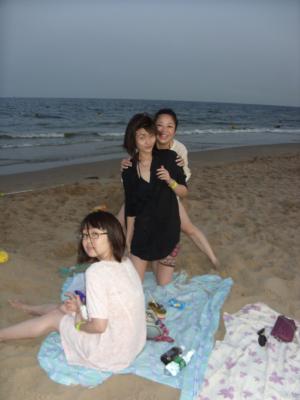
Photo by Charlotte Hirsch
Following photos by Liu Mingche 刘明彻:
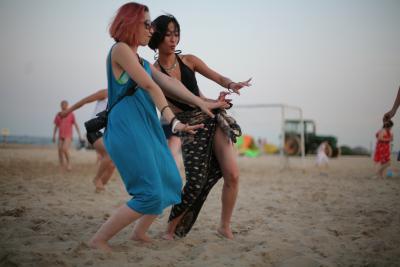
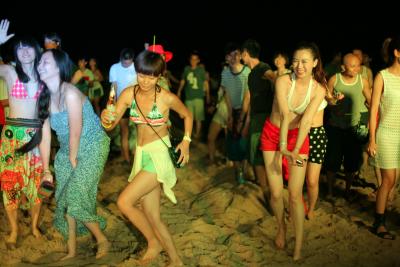
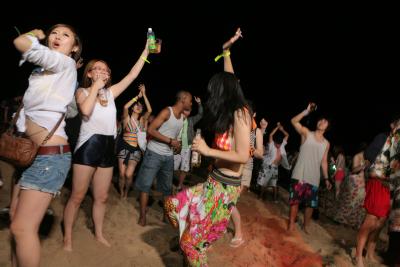
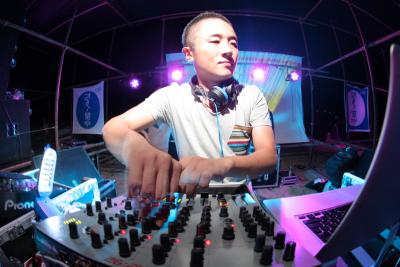
Photos by myself:
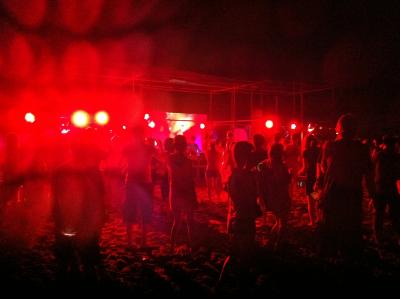
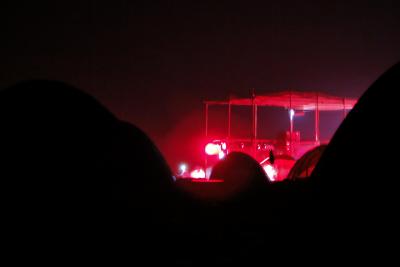
Photos by Laodu 老杜:
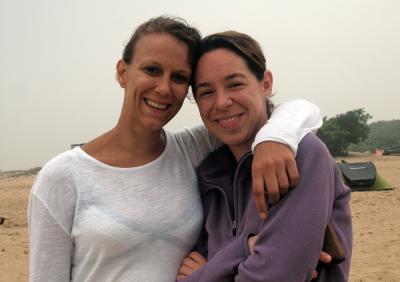
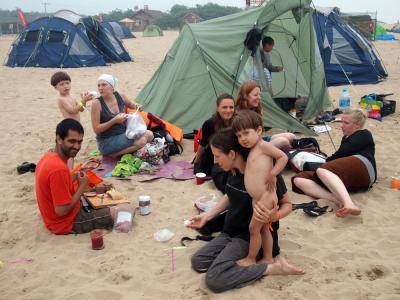
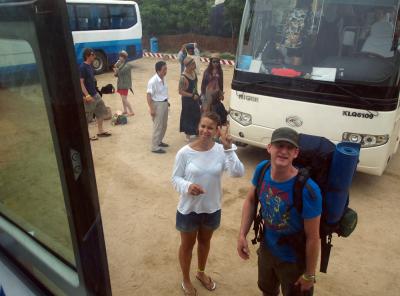
Byebye until next time!
Tags für diesen Beitrag 这本文章的标记: Reise 专程, Musik 音乐

Photo by Charlotte Hirsch
Following photos by Liu Mingche 刘明彻:




Photos by myself:


Photos by Laodu 老杜:



Byebye until next time!
Tags für diesen Beitrag 这本文章的标记: Reise 专程, Musik 音乐
... link (0 Kommentare) ... comment
Montag, 4. Juli 2011
Nandaihe in July|7月份在南戴河
youjia, 10:47h
Cíqìs, look at this beach!
瓷器们:看看沙滩!

Here will be the stage.
这边有DJ台。
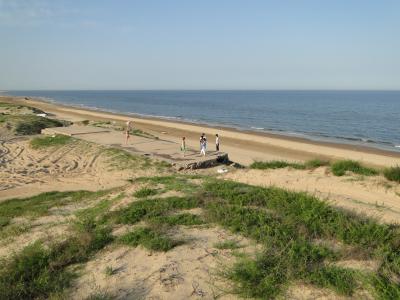

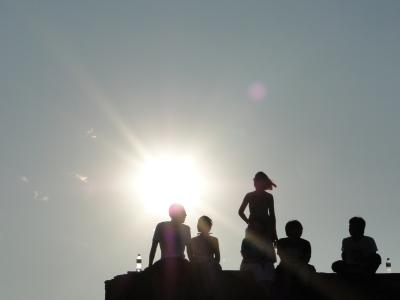
See you next weekend! 周末见!
Tags für diesen Beitrag 这本文章的标记: Reise 专程, Musik 音乐, Fotografie 摄影
瓷器们:看看沙滩!

Here will be the stage.
这边有DJ台。



See you next weekend! 周末见!
Tags für diesen Beitrag 这本文章的标记: Reise 专程, Musik 音乐, Fotografie 摄影
... link (0 Kommentare) ... comment
Sonntag, 26. Juni 2011
[cíqì 瓷器] Private Beach Party|瓷器潮汐私人派对 July 9.-10.
youjia, 19:55h
The sun over our heads in Beijing is turning the heat on – not yet as badly as in past years, but this is only the beginning …
也许你仍未体会到烈日当头时的感觉?慢慢来,北京盛夏才刚刚拉开序幕……
Have you already heard about our going to the beach? There will be music all day and night, you can bring your kids and dogs, the sand is white and the sea as blue as it gets in China, the beer is cold, your can relax and chill and dance.
听说过吗:这个7月北京,和你的密友在一片私人蓝天碧海白沙滩中,手握沁凉的啤酒放空身心,伴随着全天候的绝妙音乐,我们,以“瓷器”之名欢聚在南戴河海滩!
Join us! Contact via:
过来一起玩儿吧!练习我们:
ciqiparty@gmail.com

Tags für diesen Beitrag 这本文章的标记: Ankündigung 通知, Reise 专程, Musik 音乐, Fotografie 摄影
也许你仍未体会到烈日当头时的感觉?慢慢来,北京盛夏才刚刚拉开序幕……
Have you already heard about our going to the beach? There will be music all day and night, you can bring your kids and dogs, the sand is white and the sea as blue as it gets in China, the beer is cold, your can relax and chill and dance.
听说过吗:这个7月北京,和你的密友在一片私人蓝天碧海白沙滩中,手握沁凉的啤酒放空身心,伴随着全天候的绝妙音乐,我们,以“瓷器”之名欢聚在南戴河海滩!
Join us! Contact via:
过来一起玩儿吧!练习我们:
ciqiparty@gmail.com

Tags für diesen Beitrag 这本文章的标记: Ankündigung 通知, Reise 专程, Musik 音乐, Fotografie 摄影
... link (0 Kommentare) ... comment
Samstag, 27. November 2010
The Launch – Impressions
youjia, 03:02h
Thank you all for coming to the booklaunch on Thursday, November 25th 2010, 7:30 pm at the Bookworm in Beijing of
Culturescapes China: Chinas Kulturszene ab 2000.
Culturescapes China: China’s Cultural Scene Since 2000.
Katharina Schneider-Roos and Stefanie Thiedig (eds.)
Basel: Christoph Merian 2010.
After a short introduction about the origins of the book and an overview about the content, we had three special guests on the podium: Martin Brandes, Li Yinan and Barbara Münch – who gave more details about their special disciplines. A presentation in the background was showing all the authors' article titles and the pictures inside the book.
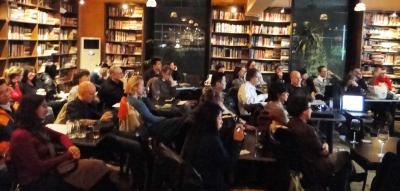
The origins
After Katharina Schneider-Roos and I first met in February 2009, the publication project is now concluded on November 2010. Our starting point was that the art scene in China and especially Beijing as the centre of culture and art was and still is on the verge of a change. We wanted to show a special perspective of the art scene through people who are actively involved, who witness the scene and participate in it – so we gathered almost thirty authors taking a ten years retrospective in the different disciplines of fine arts, film and photography, literature and theatre, music, and architecture. Our approach was commemoration – we believe that a time of reflection started and we wanted to take this to reflect ourselves, to remember the 2000s – in our own way: subjective and selective. What we were looking for was an overall structure of art works and working in the arts, and of form and content.
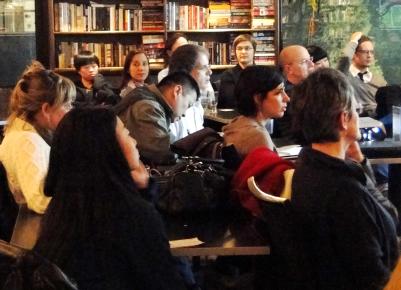
Thank you!
Katharina and I would like to express our deepest gratitude to our authors and all other contributors – we all worked for free, because we wanted to share our experiences.
Many authors also contributed photos – thank you very much! A very special photo-contribution-thank-you goes to:
- Katharina Hesse
- Shu Yang
- Uli Sigg and staff
- Doro Adam and Barbara Münch
Thank you also Cathrine Lutz and Eva Lüdi for your great translations and Johannes Schneider and your company Webducation for sponsoring 16 extra pages of color print!
My special thanks goes to Katharina who wishes us all the best regards and says hello from Basel!
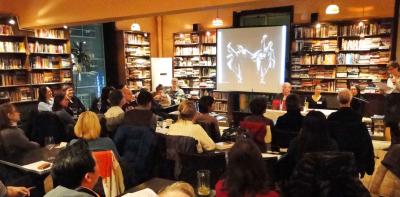
Content overview, introduction
Contemporary Chinese art has experienced a rapid hype – art and commerce approached each other, and so did the official side with the independent scene.
From 1950 until the end of the Cultural Revolution, there was no connection with the outside world in China. In the late 1970s after Deng Xiaoping’s Open Door policy, cultural basic work had to be done, where after the 1980s was a time of great social openness. Starting from universities and connected with the demand of change, everything was absorbed, which was available after China’s long isolation. A cultural fiver broke out – the New Wave.
The shock of 1989 was a relapse into the underground, followed by an inside and outside emigration in the 1990s. While many artists went abroad, those who stayed still did find a way to express themselves: the first artist's communes started, Beijing East Village and Yuanmingyuan, exhibitions in apartments of friends, experimental spaces for painting, performance art, lyrics, music and theatre in China.
In the first years of the new century, artists came out of the isolation and started to become part of the establishment. Fine arts are the prime example of the change the contemporary art scene went through: from a sub-culture in the 1990s to a cultural industry in the 2000s.
The noughties were a time of commercialisation and globalisation of apparently boundless possibilities. The time of collective exchange of thoughts and working inside groups was over, the perception of Chinese artists as individuals in the international scene had begun – away from the transfiguration of exotic romanticism.
Discussions if the beginning of commercialisation is the death of avant-garde and how prices and quality affect the work of artists are now replaced by questions of the function of art in China, of the Chinese self-consciousness, the communicated values and public education.
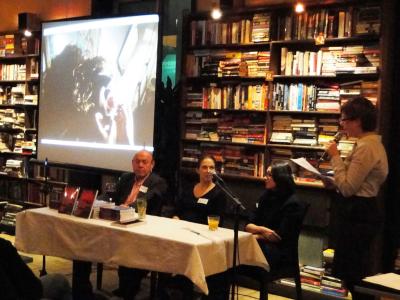
Panel discussion
According to the order of the articles in our book, we first spoke to Martin Brandes, who wrote the article about Chinese film economy. Martin lives in Beijing since 2001. Since 1975, he has been working in film distribution and in cinema and TV production, as well as writing articles for film economy magazines and his own film scripts. Martin is a script evaluator of the Pro 7/ Sat1-group, a China correspondent of various magazines, and the senior advisor of the national China Documentary Film Commission in Beijing.
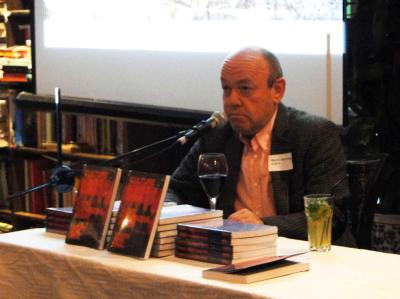
Chinese film went a long way during the past ten years. The sole status of being a propaganda instrument from the official side blurred and film became a commercial good. China is now number 3 of the film producing countries. Martin described how the commercial film market work, how strict censorship is, and what role SARFT plays. He also said a few words to how does the illegal market works. In his article, Martin describes the Chinese film economy going through massive changes in structure and focus – at the launch, he stood question and answer about figures and tendencies and also answered how the WTO accession 2001 has changed the Chinese film economy.
Our second guest was Li Yinan 李亦男, who wrote about independent theatre in Beijing. Li Yinan, who has studied German Literature, Dramatics and Sinology in Beijing, New York and Hamburg, works as a dramaturge in Beijing. She lived in Munich from 2003 working as a theatre and art critic, since 2005 she lectures in Chinese Theatre at the University of Munich, the University of Frankfurt and the Central Academy of Drama in Beijing. Since 2007, she is director of Theatre Arts in Beijing.
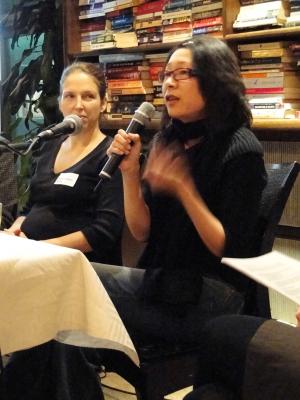
Yinan writes about young theatre people trying to find their own voice and described the current status quo and gave a quick overview about how education had changed over the last decade and what still needs to be done. There are young people coming from all over China to Beijing to see and play theatre. All they know, she says, is the few DVDs by Lin Zhaohua and Meng Jinghui. Li Yinan tells us how Beijing sticks out in being the capital for independent theatre. She has organised workshops and the new dramaturgy program at the Central Academy of Drama attempting to bring a change to the Chinese theatre scene, which she introduced to the audience.
Barbara Münch as our final guest author on the podium wrote about the contemporary architectural scene in China. Barbara studied Architecture, Economics and Engineering. Since 2000, she lectures architecture at universities in Berlin and Beijing. She is a researcher and writer about architecture and city development in China and works as an independent architect.
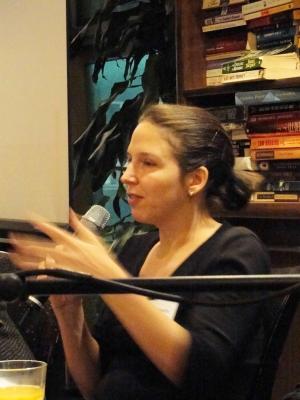
In the last couple of years, architecture has made its step from being a handicraft towards a discipline of art; exciting architecture can be found in China … Barbara talked about the still omnipresent clichee of prestige buildings by famous Western architects, described the change happening in Chinese architecture. She also spoke about how architecture helps creating a unique environment for the people – in big cities and what is going on in the suburbs and the hinterland. Moreover, she described the historic circumstances of architecture, the different views in protection of heritage: in a structural sense of how Chinese architects work in Local Design Institutes (LDIs) and independent bureaus; and in form and content if there is a Chinese architectural language.
Once again, thanks to everyone present for coming. I hope, you enjoyed the evening and went home with a few new impressions. The book is available at Amazon or contact Katharina or me directly.
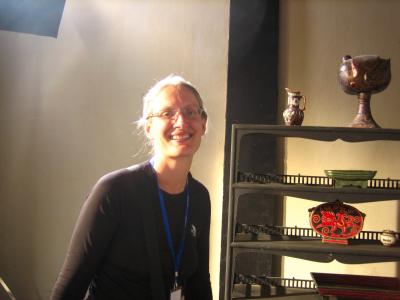
Photo provided by Katharina Schneider-Roos.
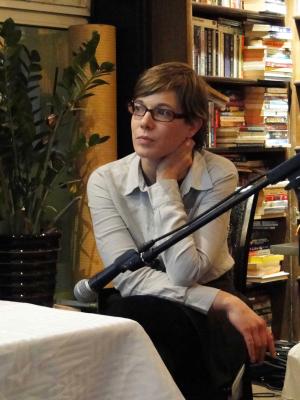
That's me, Stefanie Thiedig aka 由甲.
All pictures except the last one of Katharina were taken by Julia Odenstein.
Tags für diesen Beitrag 这本文章的标记: Architektur 建筑, Literatur 文学, Film 电影, Theater 话剧, Häufig gelesen 频看
Culturescapes China: Chinas Kulturszene ab 2000.
Culturescapes China: China’s Cultural Scene Since 2000.
Katharina Schneider-Roos and Stefanie Thiedig (eds.)
Basel: Christoph Merian 2010.
After a short introduction about the origins of the book and an overview about the content, we had three special guests on the podium: Martin Brandes, Li Yinan and Barbara Münch – who gave more details about their special disciplines. A presentation in the background was showing all the authors' article titles and the pictures inside the book.

The origins
After Katharina Schneider-Roos and I first met in February 2009, the publication project is now concluded on November 2010. Our starting point was that the art scene in China and especially Beijing as the centre of culture and art was and still is on the verge of a change. We wanted to show a special perspective of the art scene through people who are actively involved, who witness the scene and participate in it – so we gathered almost thirty authors taking a ten years retrospective in the different disciplines of fine arts, film and photography, literature and theatre, music, and architecture. Our approach was commemoration – we believe that a time of reflection started and we wanted to take this to reflect ourselves, to remember the 2000s – in our own way: subjective and selective. What we were looking for was an overall structure of art works and working in the arts, and of form and content.

Thank you!
Katharina and I would like to express our deepest gratitude to our authors and all other contributors – we all worked for free, because we wanted to share our experiences.
Many authors also contributed photos – thank you very much! A very special photo-contribution-thank-you goes to:
- Katharina Hesse
- Shu Yang
- Uli Sigg and staff
- Doro Adam and Barbara Münch
Thank you also Cathrine Lutz and Eva Lüdi for your great translations and Johannes Schneider and your company Webducation for sponsoring 16 extra pages of color print!
My special thanks goes to Katharina who wishes us all the best regards and says hello from Basel!

Content overview, introduction
Contemporary Chinese art has experienced a rapid hype – art and commerce approached each other, and so did the official side with the independent scene.
From 1950 until the end of the Cultural Revolution, there was no connection with the outside world in China. In the late 1970s after Deng Xiaoping’s Open Door policy, cultural basic work had to be done, where after the 1980s was a time of great social openness. Starting from universities and connected with the demand of change, everything was absorbed, which was available after China’s long isolation. A cultural fiver broke out – the New Wave.
The shock of 1989 was a relapse into the underground, followed by an inside and outside emigration in the 1990s. While many artists went abroad, those who stayed still did find a way to express themselves: the first artist's communes started, Beijing East Village and Yuanmingyuan, exhibitions in apartments of friends, experimental spaces for painting, performance art, lyrics, music and theatre in China.
In the first years of the new century, artists came out of the isolation and started to become part of the establishment. Fine arts are the prime example of the change the contemporary art scene went through: from a sub-culture in the 1990s to a cultural industry in the 2000s.
The noughties were a time of commercialisation and globalisation of apparently boundless possibilities. The time of collective exchange of thoughts and working inside groups was over, the perception of Chinese artists as individuals in the international scene had begun – away from the transfiguration of exotic romanticism.
Discussions if the beginning of commercialisation is the death of avant-garde and how prices and quality affect the work of artists are now replaced by questions of the function of art in China, of the Chinese self-consciousness, the communicated values and public education.

Panel discussion
According to the order of the articles in our book, we first spoke to Martin Brandes, who wrote the article about Chinese film economy. Martin lives in Beijing since 2001. Since 1975, he has been working in film distribution and in cinema and TV production, as well as writing articles for film economy magazines and his own film scripts. Martin is a script evaluator of the Pro 7/ Sat1-group, a China correspondent of various magazines, and the senior advisor of the national China Documentary Film Commission in Beijing.

Chinese film went a long way during the past ten years. The sole status of being a propaganda instrument from the official side blurred and film became a commercial good. China is now number 3 of the film producing countries. Martin described how the commercial film market work, how strict censorship is, and what role SARFT plays. He also said a few words to how does the illegal market works. In his article, Martin describes the Chinese film economy going through massive changes in structure and focus – at the launch, he stood question and answer about figures and tendencies and also answered how the WTO accession 2001 has changed the Chinese film economy.
Our second guest was Li Yinan 李亦男, who wrote about independent theatre in Beijing. Li Yinan, who has studied German Literature, Dramatics and Sinology in Beijing, New York and Hamburg, works as a dramaturge in Beijing. She lived in Munich from 2003 working as a theatre and art critic, since 2005 she lectures in Chinese Theatre at the University of Munich, the University of Frankfurt and the Central Academy of Drama in Beijing. Since 2007, she is director of Theatre Arts in Beijing.

Yinan writes about young theatre people trying to find their own voice and described the current status quo and gave a quick overview about how education had changed over the last decade and what still needs to be done. There are young people coming from all over China to Beijing to see and play theatre. All they know, she says, is the few DVDs by Lin Zhaohua and Meng Jinghui. Li Yinan tells us how Beijing sticks out in being the capital for independent theatre. She has organised workshops and the new dramaturgy program at the Central Academy of Drama attempting to bring a change to the Chinese theatre scene, which she introduced to the audience.
Barbara Münch as our final guest author on the podium wrote about the contemporary architectural scene in China. Barbara studied Architecture, Economics and Engineering. Since 2000, she lectures architecture at universities in Berlin and Beijing. She is a researcher and writer about architecture and city development in China and works as an independent architect.

In the last couple of years, architecture has made its step from being a handicraft towards a discipline of art; exciting architecture can be found in China … Barbara talked about the still omnipresent clichee of prestige buildings by famous Western architects, described the change happening in Chinese architecture. She also spoke about how architecture helps creating a unique environment for the people – in big cities and what is going on in the suburbs and the hinterland. Moreover, she described the historic circumstances of architecture, the different views in protection of heritage: in a structural sense of how Chinese architects work in Local Design Institutes (LDIs) and independent bureaus; and in form and content if there is a Chinese architectural language.
Once again, thanks to everyone present for coming. I hope, you enjoyed the evening and went home with a few new impressions. The book is available at Amazon or contact Katharina or me directly.

Photo provided by Katharina Schneider-Roos.

That's me, Stefanie Thiedig aka 由甲.
All pictures except the last one of Katharina were taken by Julia Odenstein.
Tags für diesen Beitrag 这本文章的标记: Architektur 建筑, Literatur 文学, Film 电影, Theater 话剧, Häufig gelesen 频看
... link (0 Kommentare) ... comment
... nächste Seite